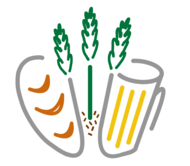Seed inoculation of Hartmannibacter diazotrophicus does not alter the rhizosphere bacterial microbiome of wheat and barley in a three-year field trial (2025)
Quiroga, S., Ratering, S., David Rosado-Porto, D., Rekowski, A., Schulz, F., Zörb, C., Schnell, S.
Applied Soil Ecology, 206 (),
doi:0.1016/j.apsoil.2024.10582
Abstract
he effects of plant growth promoting bacteria used for inoculation on native microorganisms remain unexplored under field conditions and, to a lesser extent, in longitudinal studies using different crops. This study, spanning three seasons across two organic fields, examined through 16S rRNA gene sequencing how the seed inoculation of Hartmannibacter diazotrophicus influenced the rhizosphere bacterial communities of wheat and barley. In addition to bacterial inoculation, the effects of row spacing and organic fertilizer application were also assessed. Together with previous results, we determined that H. diazotrophicus could improve crop yield parameters without altering the bacterial community composition. Alpha and beta diversity indices showed non-significant effects for most of the three factors evaluated. The 19 most prevalent taxa at the genus level were identified in both crop species, which mainly encompassed the phyla Pseudomonadota, Acidobacteriota, and Actinomycetota. Differential abundance analysis showed that the location significantly influenced the recruitment of different bacterial communities by the same crop species. While in one organic farm, 2860 ASVs were affected by crop species, 232 ASVs were impacted at the other location. Further analyses, including longitudinal analysis, linear mixed model effects, and diversity indices, showed a significant effect of location, crop species, and season on the dynamics of bacterial communities. Our results are unusual compared with most of the studies reported and indicate the resilience of rhizosphere bacterial populations after the incorporation of an allochthonous microorganism such as H. diazotrophicus.
